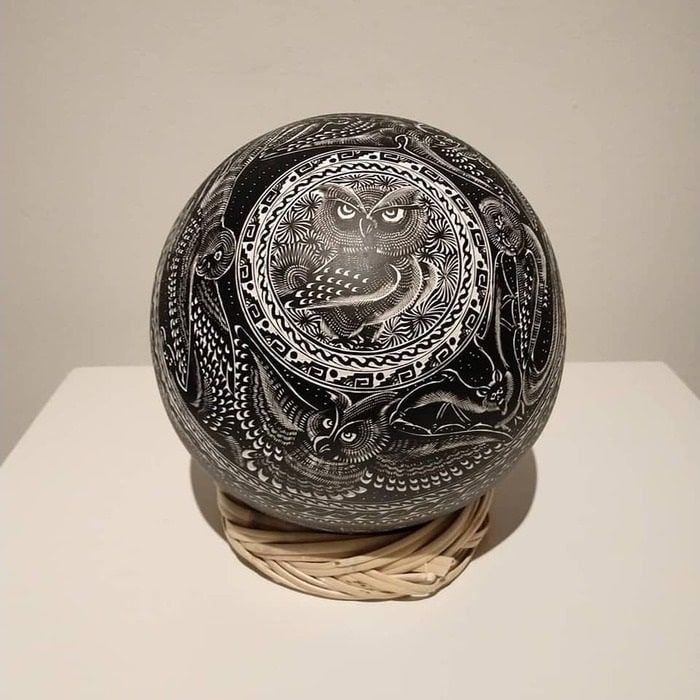National Museum of Popular Cultures, Mexico's living art
The main objective of the National Museum of Popular Cultures is to show the cultural heritage of the indigenous peoples of Mexico.

The National Museum of Popular Cultures has become a reference point for popular culture and the variety of what it means to be Mexican; the museum has a collection of 40,000 objects of indigenous, popular, and urban culture.
Nestled in the center of Coyoacán, there is a place where popular culture, crafts, and even gastronomy find a harmony that captivates locals and strangers. This is the National Museum of Popular Cultures, a place that in 37 years of existence has become the voice of ethnic and cultural diversity of the country, and has managed to place itself in the taste of the inhabitants of Mexico City, as well as national and international tourists.
Established on September 24, 1982, with an exhibition related to the cornfields, the venue was founded by anthropologist and ethnologist Guillermo Bonfil Batalla, as a way of providing projection to the native peoples of the country and the Mexican capital, a task that in the '80s was fundamental in the face of the economic, political and socio-cultural crisis that Mexico was going through.
In that decade, Bonfil Batalla warned of the need to create a space dedicated to talking about those social groups then considered as subalterns and whose vision of reality was, and is different from that of the average Mexican.
It was then, in coordination with a group of anthropologists and ethnologists, that they took on the task of compiling data on indigenous groups and popular sectors that could express their traditions and customs.
The main objective of the National Museum of Popular Cultures is to show the cultural heritage of the indigenous peoples of Mexico to achieve a cultural dialogue with today's society so that their wealth and contribution to the country are recognized.
One of the main difficulties faced by indigenous peoples in the nineteenth century is latent discrimination and racism in Mexico, scourges that have been present since the beginning of the museum, although they have successfully overcome through the inclusion of communities and the dissemination of their traditions, which has made them increasingly valued.
Although there is still a lot of work to be done, the venue has become a reference point for popular culture and the variety of what it means to be Mexican. Proof of this is the constant exhibitions that go beyond exhibiting this popular art since they include ethnographic and gastronomic samples that attract an important number of visitors to the museum.
In addition to the exhibitions, the work of the Museum includes other manifestations of indigenous peoples and popular urban cultures, such as knowledge and expertise, such as workshops that invite visitors to learn about the process of making textiles or traditional foods such as tamales or bread of the dead.
Another of the challenges that the Museum is working on is that of expanding the cultural offer. In this sense, its work extends to research. In the coming months, the recitals will exhibit the culture and tradition of communities in the north of the country, a task that involves research and approaching these populations.
From getting to know their world view to inviting them to show their work, are tasks that take from one to two years, however, this arduous work allows the communities to be known and can market their products, hence, another task of the museum: that of ensuring that the crafts are acquired at a fair price that will promote local economies.
In this way, it is possible to include people in the urban setting from their diversity, essence, language, and traditions. Thanks to the food culture festivals held by the museum, the purchase from direct producers have been encouraged, as has the organization of the Amber Fair, Honey Fair, and even the upcoming Day of the Dead Festival, which is expected to attract a significant number of visitors.
It is important to preserve this type of activity to avoid the traditions of these communities disappearing and endure the passage of time, globalization, migration, and even insecurity in the country.
The society also plays an important role, that in understanding Mexico as an ethnic mosaic with 69 languages, which also means 69 ways of understanding reality, that of opening the eyes to the diversity of being Mexican and the plurality that exists in the country.
Get closer to the communities through trips to the interior of the heart of the country, where they are, and thus get to know them closely. For their part, the native peoples have a challenge internally, to promote their traditions and language, gastronomy and adapt to modern times without leaving aside their essence.
Hours:
Tuesday to Thursday from 10:00 am to 6:00 pm
Friday to Sunday from 10:00 am to 8:00 pm




